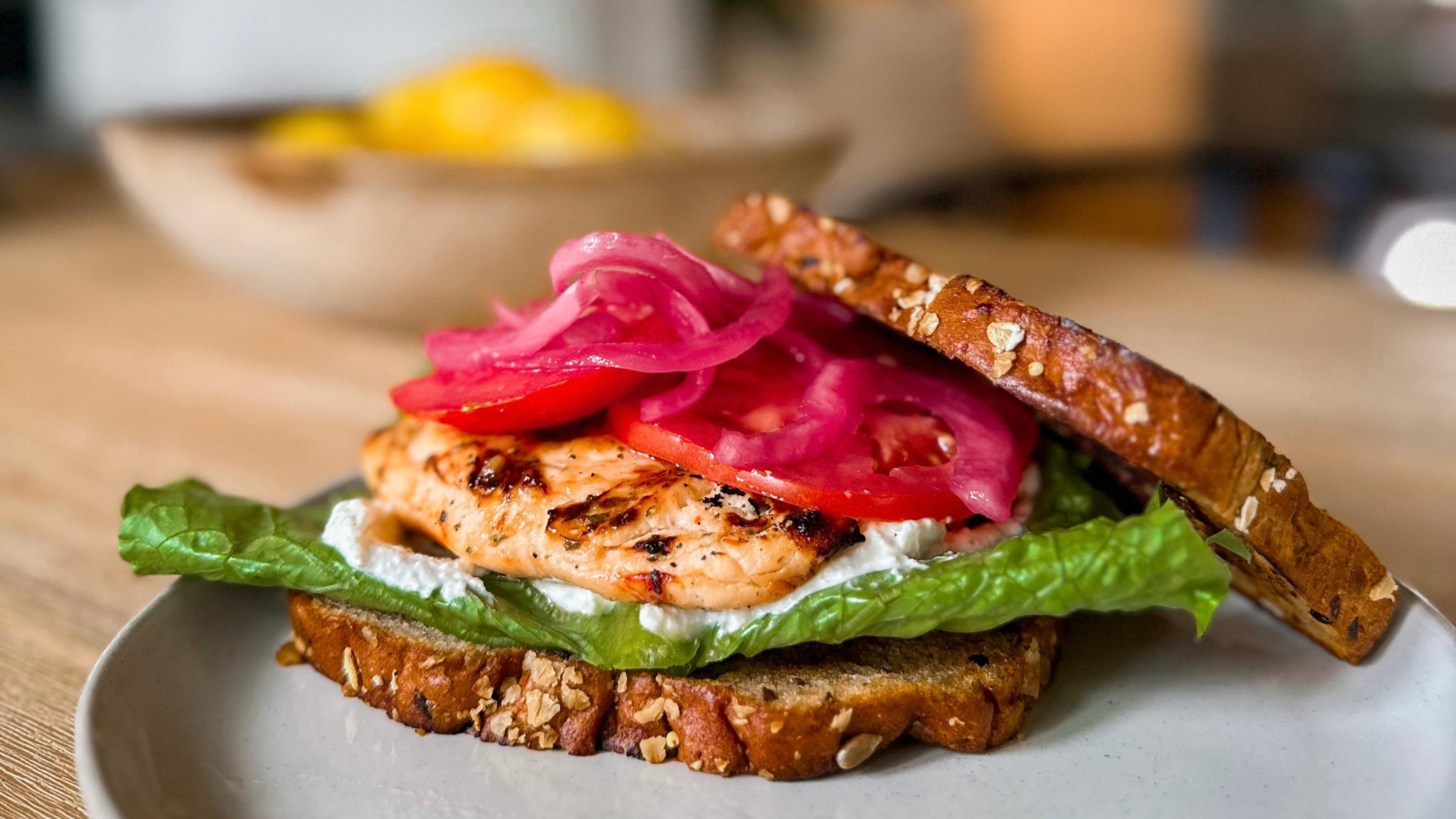Grocery Cart Makeover: 5 Changes to Make the Next Time You Go Shopping

Julie Bitely
| 3 min read

Walking through a grocery store can feel like a minefield when you’re trying to make healthy eating a priority.
Not only are there countless aisles of junk food to resist, but sometimes a seemingly healthy choice can be loaded with fat, sugar, or ingredients you don’t need. Product marketers can get away with saying a lot of things that might make you think something is healthy if you’re not diligent about reading labels.
Lettuce Live Well is a Lansing organization that’s partnered with Cooking Matters at the Store to give local, low-income families tips and resources on how to better stretch their food budget on healthy purchases. Kelly Zielinski is founder and president of Lettuce Live Well, and recently led a group of participants on a shopping expedition at the Eastwood Town Center Wal-Mart. We tagged along so we could share her tips with you, aisle by aisle.
Bread: If the first ingredient listed on your loaf of bread doesn’t say “whole grain”, put it back. You should also be wary of the carbohydrate section of the nutrition facts label. Fifteen grams is considered one serving of carbs based on a 2,000-calorie diet. When you subtract the fiber listed from the total carbohydrate amount, the remaining amount is how much sugar you’re consuming. You want to look for bread that contains a high amount of fiber, which will help you feel full longer. Since bread with more fiber will keep you full, you might find that you need to buy less of it and since you won’t eat as much, it’ll save you money.
Pasta and rice: Switching to whole grain pasta and rice is another smart move. You won’t notice much of a difference and you’ll be getting higher-quality nutrition. Zielinski recommended mixing regular pasta with whole wheat or white rice with brown rice gradually to ease yourself and your family into the change.
Meat: Since meat is often a pricier grocery item, Zielinski said buying less is not only good for you, it’s great for your wallet. Ideally, protein should only take up about one-quarter of your plate at mealtime. Opt for low-fat chicken, turkey, and fish when you do eat meat and mix up your sources of protein by choosing beans, peas, nuts, seeds, and eggs.
Produce: Think fresh is always best? That’s really not the case, especially during Michigan winters.
“Fresh is not always the best option,” Zielinski said.
Canned and frozen fruits and vegetables are packaged at peak freshness, so they’re no less nutritious and they can oftentimes be more economical. When fresh, seasonal fruits and vegetables are available, make sure you’re not wasting money by letting them go to waste. Combine fruits in fruit salads, top cereal or salads with topped fruits, chop and store fresh fruit in the freezer for smoothies, or add vegetables to soups, stews, casseroles, pasta, sauces, or in omelettes.
Dairy: Go for dairy products that are low-fat, including milk, yogurt, and cheese. Watch out for added sugars and artificial sweeteners in yogurt. Even though artificial sweeteners help you avoid calories, they actually trick your brain into craving more sweet foods – not exactly great for your healthy eating goals. Your best bet is buying plain, fat-free Greek yogurt and topping it with fresh or frozen fruit.
If you’re interested in participating in a Cooking Matters at the Store tour through Lettuce Lives Well, contact them by emailing [email protected] or by calling 517-898-1870. You can also read about the organization’s efforts to help Lansing lose a million.
If you liked this post, you might also enjoy:
Photo credit: Caden Crawford





